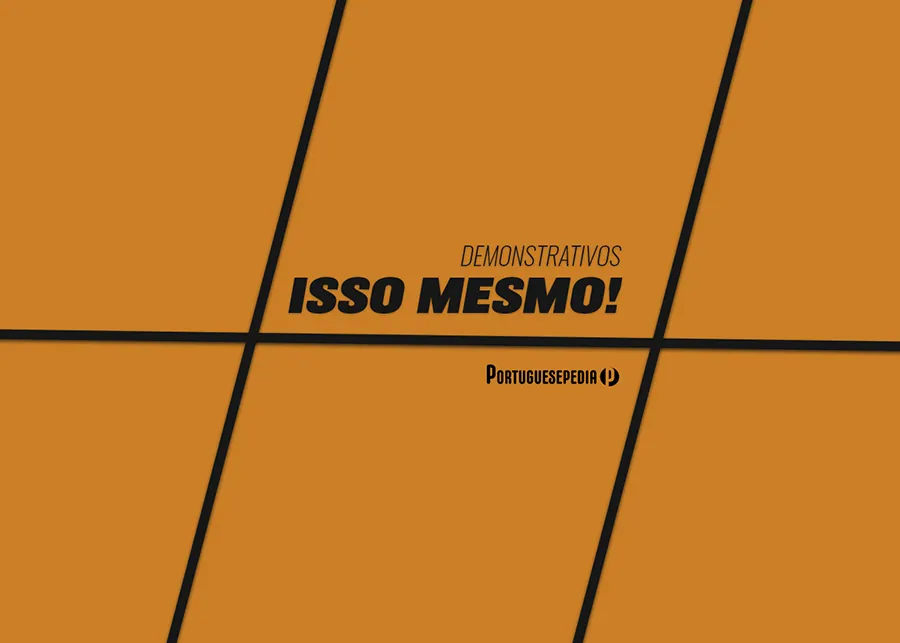
Portuguese Demonstrative Pronouns and Determiners
Demonstratives are words we use to point out a person or object, including their location concerning the speaker and hearer.
Portuguese demonstratives work along the same lines as the English, that is, they indicate whether something is closer or further away, either in time or space:
| Esta mesa aqui é de vidro; essa aí é de madeira. This table here is made of glass; that one is made of wood. Estes tempos de agora são complicados do que aqueles de outrora. These present times are more complicated than those from before. |
Now, Portuguese demonstratives are more nuanced than the English. This is because they conform with the gender and number of the nouns they refer to (there is also a neuter form that disregards number and gender).
Besides, there is a third variant of demonstratives encoding a specific spatial relationship between speaker, hearer, and object that English misses altogether.
Finally, let’s not forget about contractions: Portuguese demonstratives merge with a few prepositions. This means you need to keep track of a more varied word morphology (compared to English).
Let’s dive in.
Variable vs. invariable demonstratives
In Portuguese, demonstratives come in two flavors, variable and invariable (neuter).
Variable demonstratives are specific in that they conform to the number and gender of the nouns they refer to.
Invariable demonstratives, on the other hand, don’t attend to either number or gender and are, therefore, more general.
Variable
Variable demonstratives change their endings to agree with the noun’s gender and number they refer to:
| singular/feminine Esta pera é saborosa. (a pera) This pear is tasty. | plural/masculine Estes melões são saborosos. (os melões) These melons are tasty. |
Also, they can be used either as stand-alone pronouns (substituting for the noun altogether) or adjectivally as determiners:
| as a determiner Estas maçãs não prestam! These apples are no good! | as a pronoun Estas não prestam! These are no good! |
Invariable
Invariable demonstratives don’t conform to either gender or number. They are less specific and always used as pronouns:
| Isto é saboroso. This is tasty. |
We often use them to either speak concisely or in more abstract terms (compared to variable demonstrations):

Olá! I'm Pedro and I'm your Portuguese teacher.
Ready to unlock the beauty of European Portuguese? Portuguesepedia is your key! This all-in-one platform provides a wealth of learning resources, from bite-sized video lessons to immersive idiomatic dips. Perfect your pronunciation and aural comprehension with listening drills and solidify your grammar with in-depth articles. Start your Portuguese journey today!
Share this article
Get my guide "Key Strategies to Learn Portuguese" for FREE.
